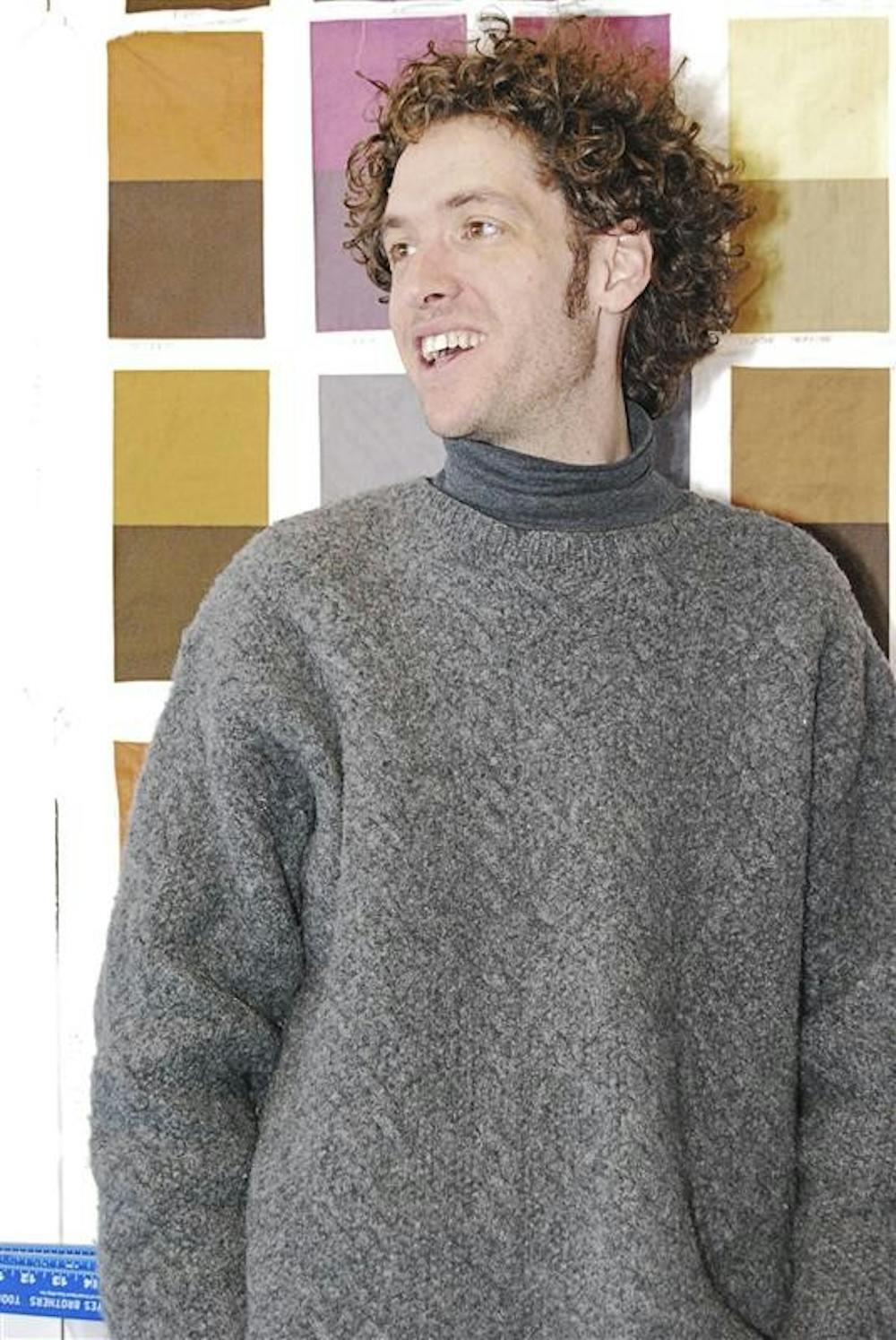Led by the late Budd Stalnaker, a former textiles professor, the IU textiles graduate program molded creative artists for more than 40 years. When Stalnaker died in 2006, the program did, too.
With no full-time tenured professor to take his place, the program fell, and the number of textiles students dwindled.
Rowland Ricketts, who became an assistant professor in 2005 and was granted full-time tenure this year, is working to bring back what Stalnaker created.
“He really built a program that was honestly internationally renowned in textiles,” Ricketts said.
This year, IU began offering a master’s degree in textiles again. More students have expressed an interest in textiles over the years, partly due to the field’s versatility.
“I do believe that it’s a very broad field that overlaps with other fine arts fields,” Ricketts said.
Graduate assistant textiles professor Megan Abajian proves this point. Though she’s a painter, she enrolled in a few textiles classes once she saw students working with dyes and wool. She said the hands-on approach to textiles intrigued her, and she went on to teach introductory classes in the field at IU.
“There’s just so many options available in textiles,” she said.
Abajian said that although students have shown interest in the program, building it back up will take time.
Amy Burrell e-mailed Ricketts last year about restarting the program and since then has become the program’s only graduate student. With Rickett’s promotion to full-time tenure, reviving the program became a possibility.
“It kind of started all at once,” Burrell said.
Burrell graduated from IU with a degree in ballet performance and worked in costume design for dance performances. She then attended fashion school and received a degree in fashion design. Working with modern dance costumes, Burrell looked more into the art behind fabrics and wanted to go into textiles to teach at the collegiate level.
As the only student, Burrell said she would like more numbers in the program.
“We see other people’s work, and it broadens our ideas and inspires us,” she said. “I’m hoping that after people find out about Rowland being here, they apply and the program grows.”
Like Burrell, Ricketts didn’t originally plan to become a textiles artist. His interest in Japanese culture ultimately lead him to the craft, starting when he took part in his high school’s exchange program in Japan.
“It was so different from anything I’d experienced at the time as a 15-year-old,” he said.
He studied the Japanese language and graduated from Wesleyan University in 1993 with a degree in Eastern Asian studies. With his schooling complete, Ricketts went back to Japan to teach English at a public high school, travel and like most recent graduates, figure out what he wanted to do with his life.
Then he found indigo.
Ricketts was intrigued by indigo dyeing, a Japanese tradition dating back to the 10th century. He set up an apprenticeship with an indigo farm where he helped cultivate indigo plants, process them into dye and apply it to fabrics.
With no previous experience in textiles, Ricketts said he spent two years learning the craft, using natural and local materials.
“I wanted to learn how to take a plant and turn it into a dye. I think that whole process is interesting,” he said. “That knowledge still exists there, to take material from the environment and transform it into profound beauty.”
Ricketts applies his experience abroad to his teaching. He wants his students not only to learn how to create art, but to understand the history of textiles and the story
behind the materials used.
“Through the craft, there’s a very strong connection to other times, other places, other cultures,” he said.
Ricketts said some textiles programs only focus on the science behind fabric, such as how to construct carbon fiber material for space shuttles, or on fashion design. IU’s program will take a broadly defined fine arts approach.
He added that the program encompasses different aspects of textiles, including quilting, weaving, dyeing, performance, sculpture, crochet and digital art.
“It’s going to basically be pushing the boundaries of traditional textiles,” Abajian said.
One of the ways IU’s program will stand out from other schools’ is by encouraging environmentally friendly techniques, such as using natural materials instead of
synthetic chemicals, Ricketts said.
“The greening of the studio is something I’m interested in, and bringing it into the program,” Ricketts said.
He also hopes to offer more courses in the future and add more students to the program. But for now, the graduate textiles program’s one student is setting the pace for prospective students.
“It’s been very insightful,” Burrell said. “I feel like I’m being challenged in a positive way.”
New threads of life

Get stories like this in your inbox
Subscribe





